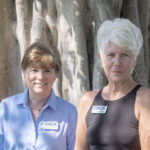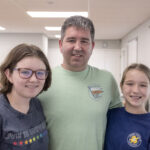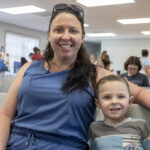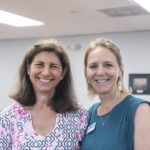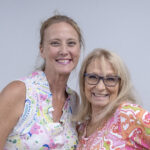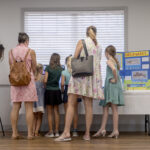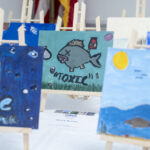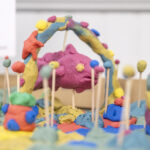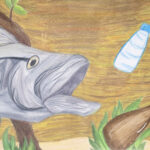
Local creatives took science to the next level when they answered a challenge by the Ocean Research Conservation Association to express datasets, collected by ORCA citizen scientists, in an artistic fashion rather than through traditional means.
Their efforts were applauded at the Data Jam: Combining Art and Science Awards Ceremony, which took place at the Riverhouse, a fitting location due to its proximity to the picturesque lagoon.
“Our mission is to protect and restore aquatic waterways and the species that those waterways sustain, with a particular emphasis on the Indian River Lagoon,” said Missy Weiss, ORCA citizen science and education director.
By engaging the community in scientific research, Weiss explained that they can obtain a deeper understanding of what is happening to the lagoon.
She added that the Data Jam allows participants to hone their analytic and interpretive skills, and “advances people’s scientific knowledge and experiences.”
ORCA provided participants with four datasets collected by citizen scientists and asked them to interpret the data artistically.
“Something innovative. Something unique and that allows the viewer to look at that artwork and know exactly what the data is telling them through that artistic piece. So, it’s about telling the story of data,” said Weiss.
And they did just that, using everything from clay to computers, with the results ranging from dioramas to dramatic productions.
“Art is a universal language. It is something that, no matter what you’re trying to convey, is something that we can all relate to. We are thankful that you took our data, flipped it on its head, and merged it with science. Such an important thing to do, especially for the younger generation,” added Weiss.
Afterward, Edie Widder, Ph.D., ORCA founder and CEO, connected art and science with a presentation on Why Art Matters in Science.
“Data Jam isn’t just about creating works of art from data. It’s about generating new kinds of insights. For that to be effective, it needs to start as young as possible. Scientists and artists have to learn to communicate,” said Widder.
“That’s what Data Jam is about, and these kids give me hope that they really can do that. They did some pretty amazing stuff here,” said Widder, before sharing examples of the ways art has helped to advance scientific discoveries throughout the ages.
“Art and science are the two most powerful tools that we have to explain our place in the world and explain our world. It’s often treated as a dichotomy, but they are actually synergistic and can empower each other,” said Widder.
For more information, visit teamorca.org.
Photos by Joshua Kodis
- Edie Widder and Michelle Martin.
- (front) Laine Kazmerowski and Reva Ullian, (back) Reed Ullian, Emmy Kazmerowski, Liz Kazmerowski and Liz Ullian.
- Tommy McLaughlin, Vinny Topalian and Nicole Campanelli.
- Grace, Eric and Jillian Johnson.
- Ariela, Mark, Liam and Milena Kelly.
- Hannah and Wyatt Kile.
- Debra Morse and Missy Weiss.
- Karen and Bob Nikla.
- Lorri Dior and Carole Jones.
- Jade Herdocia, Briella Sullivan and Alissa Winfrey.

